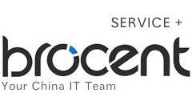SUPPORT: (+86)400-081-2026

Manage All of IT from a Single Integrated Console,Deliver higher service quality and achieve greater IT efficiency with Brocent Managed IT Service, offering remote monitoring and management for all IT functions integrated in a single console.

Manage and Secure Widely Distributed Environments. maximize efficiency and improve service levels using remote monitoring and management to discover and connect to any device securely.

Advanced security systems help protect your data and keep your business up and running.
- BROCENT RMM SOLUTIONS
- Field Service Coverage China
- A Flexible Service Level Agreement
BROCENT RMM SOLUTIONS
IT complexity keeps increasing, driven by new technology trends such as cloud, mobility, virtualization and other highly distributed environments. The need to support existing and new infrastructure and applications has become both more urgent and more difficult to deliver. Learn how Brocent can help you exceed service-level expectations and dramatically improve your IT efficiency.
With Brocent, you can:
- Ensure the availability, performance, and security of your entire IT environment – on-premise, cloud, and mobile
- Extend your reach, maximize staff efficiency, and exceed service-level performance
- Increase productivity and do more with your existing staff
Field Service Coverage China
A Flexible Service Level Agreement
